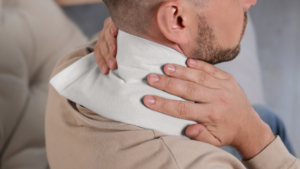Treating pain with hot and cold therapy can be very effective for a variety of conditions and injuries. This affordable, at-home therapy is often recommended to help relieve aches and pains from muscle or joint damage.
Heat therapy can utilize hot water bottles, heat pads, or warm baths. Cold therapy involves ice packs, cool water, or cold compresses. However, it can be confusing what type of aches and conditions call for hot therapy and which ones call for cold therapy. In some cases, using both may be a successful combination. Alternating heat and cold helps increase blood flow to the site of the pain.

Treating pain with heat and cold therapy
Cold Therapy
Cold therapy, also known as cryotherapy, helps reduce inflammation and swelling. It aids in slowing the rate of reducing tissue damage around a joint or tendon. Cold therapy can numb sore muscle tissue, almost acting as an anesthetic. It has the ability to slow down the pain signals that are transmitted to the brain.
Cold compresses are a common at-home treatment for standard injuries – RICE – Rest, ice, compression, elevation.
This treatment helps conditions such as osteoarthritis, injuries, gout, muscle strains, and tendinitis. It can also help reduce the pain induced by headaches or migraines.
Types of Cold Therapy
Cold therapy can be applied in a number of ways to an affected area. Common treatment options for at-home pain relief include:
- Ice packs: Cold compress or cold packs applied to an affected area for 20 minutes every 4-6 hours can reduce inflammation and swelling.
- Ice baths: Soaking in a cold (but not freezing) bath helps slow blood flow and reduce pain
- Coolant sprays
Other types of advanced cold therapy include:
- Using cold during stretching helps reduce muscle spasms. This is called try stretching.
- Cryokinetics combines active exercises and cold treatment to help ligament sprains.
- Whole-body cold therapy chambers
Heat Therapy
Heat therapy increases blood flow to a specific area and improves circulation. This is because heat on an inflamed area causes the blood vessels to dilate, promoting blood flow to the injured area. Applying heat to an affected area can provide comfort, increase muscle flexibility, and heal damaged tissue.
Improving circulation to a specific area is important in soothing discomfort and eliminating lactic acid waste that builds up after certain types of exercise.
Heat therapy is effective in treating chronic muscle pain or sore joints caused by arthritis, strains, and sprains, relieving pain or spasms due to neck or back injury, or tendonitis.
Types of Heat Therapy
There are two types of heat therapy: dry heat and moist heat. Regardless of the type of heat you choose, the heat should always be warm – not hot.
- Dry heat: This type of therapy includes heating pads, warm compresses, or hot water bottles. Dry heat is easily applied and simple to do at home.
- Moist heat: This version of heat therapy includes using steamed towels, warm baths (between 92 and 100 degrees Fahrenheit).
Moist heat often requires less application time and is considered to be more effective than dry heat. Professional heat therapies can also be utilized. This may include heat from an ultrasound, and is especially helpful when the pain is caused by tendonitis.
Minor stiffness and pain can often be relieved with 15-20 minutes of applied heat therapy.Heat should only be used no longer than 20 minutes at a time, up to three times a day, unless instructed otherwise by a medical professional.
Moderate-to-severe pain may be relieved by longer heat sessions, such as a soaking bath that lasts anywhere from 30 minutes to two hours.
Alternating Heat and Cold Therapy
In some cases, such as exercise-induced injuries, pain, or osteoarthritis, alternating between heat and cold therapy is most effective.
Cold therapy causes the blood vessels to contract and reduces circulation, decreasing pain. Removing the cold causes the veins to expand, increasing circulation. Heat therapy can assist circulation and the incoming flow of nutrients that can heal the injured tissues.
Contact the team at Progressive Pain Management to learn more about heat and cold therapy and how it can help temporarily relieve chronic pain.

